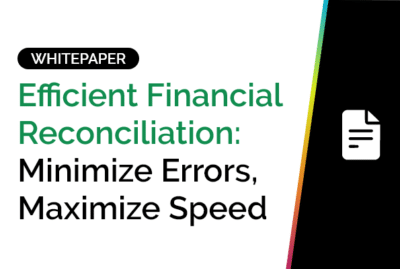What Is an Accounts Payable Report?
An Accounts Payable (AP) report is a crucial financial document designed to clearly detail a company’s financial obligations to its vendors and suppliers. It systematically compiles essential data, including invoice numbers, vendor names, amounts due, payment terms, due dates, and transaction statuses. This comprehensive overview ensures businesses maintain a transparent view of their financial responsibilities, thereby enabling timely payments and maintaining smooth cash flow management.
Beyond the basic overview, AP reports specifically highlight aged payables—outstanding debts categorized according to how overdue they are. This classification provides critical insights, allowing finance teams to prioritize and manage payments efficiently. By regularly reviewing AP reports, businesses can proactively manage their liabilities, avoid costly late fees, and foster stronger, trust-based vendor relationships.
What Is Accounts Payable Reporting?
Accounts Payable Reporting is the detailed, organized approach to documenting, tracking, analyzing, and managing the financial obligations a company owes to external vendors and suppliers. It includes meticulously matching invoices against purchase orders and delivery receipts, maintaining compliance with payment terms, and ensuring accurate records are maintained for transparency and audit readiness.
Effective accounts payable reporting practices empower organizations to gain better control over their financial activities, manage cash flow effectively, enhance vendor relationships, and uphold fiscal compliance. Robust reporting also facilitates informed strategic decisions, reliable financial forecasting, and precise budget planning.
Where Are Accounts Payable Reported in Financial Statements?
Accounts Payable appear prominently under current liabilities in a company’s balance sheet. Current liabilities signify obligations expected to be settled within one financial year, emphasizing the immediate nature of these financial commitments. The clear reporting of accounts payable provides vital information for stakeholders, including creditors and
investors, helping them assess the company’s liquidity, financial health, and creditworthiness.
Furthermore, detailed accounts payable data are often included in supplementary reports such as trial balances, adding additional clarity and depth to a company’s overall financial picture.
Why Are Accounts Payable Reports Important?
Accounts Payable reports hold significant importance in financial management as they directly impact cash flow, vendor relationships, and regulatory compliance. Timely and accurate AP reporting ensures that companies can manage payments effectively, capitalize on early-payment discounts, prevent unnecessary penalties, and enhance vendor trust.
Moreover, consistent monitoring through detailed AP reports provides businesses with actionable insights, supporting strategic financial decisions, budget accuracy, and overall financial stability. Accurate AP reports are vital for sustaining long-term business growth and financial integrity.
Understanding Accounts Payable Reports
Accounts Payable reports can take various forms, each serving a specific financial management purpose. Common types include aging accounts payable reports, AP aging reports, aged AP reports, and specialized systems like SAP AP aging reports. These reports categorize outstanding liabilities based on the duration of their overdue status—usually segmented into standard intervals such as 30, 60, or 90 days past due.
This structured format enables finance teams to swiftly identify urgent payment priorities, negotiate better vendor terms, manage cash flow more effectively, and maintain the company’s creditworthiness by minimizing overdue payments.
7 Best Practices to Improve Accounts Payable Process
1. Regularly audit AP processes to identify discrepancies and maintain compliance.
2. Leverage AP automation software to streamline workflows and reporting accuracy.
3. Optimize early payment discounts to enhance cash flow and vendor relations.
4. Maintain detailed documentation for audit readiness and regulatory compliance.
5. Perform consistent reconciliations to uphold accurate financial records.
6. Develop comprehensive vendor management strategies to foster stronger partnerships.
7. Utilize advanced analytics to enhance cash flow forecasting and strategic financial decision-making.
Frequently Asked Questions (FAQs): Accounts Payable Reporting
What is the purpose of accounts payable reporting?
Accounts payable reporting aims to systematically track money owed to vendors, ensuring accurate payments, enhancing vendor trust, and improving cash flow management.
What are the benefits of accounts payable reports?
They help optimize cash flow, prevent late fees, capture early payment discounts, maintain compliance, and support accurate financial planning and decision-making.
Where are accounts payable reported on?
Accounts payable are reported as current liabilities on the balance sheet, indicating short-term financial obligations due within a fiscal year.
What is outstanding accounts payable report?
This report lists all unpaid invoices and liabilities, providing businesses with clear visibility to manage payment schedules and financial obligations effectively.
What is a vendor in accounts payable?
A vendor is an external entity supplying goods or services to a business, whose invoices become financial obligations tracked through accounts payable processes.
What is an accounts payable aging report?
An aging report categorizes unpaid invoices by how long they have been outstanding, allowing companies to manage and prioritize payments effectively based on urgency.
What is an open AP report?
An open AP report provides a detailed listing of unpaid invoices at a specific time, enhancing visibility and aiding in prompt and efficient management of liabilities.
What are the four functions of accounts payable?
The four key functions include invoice management, payment processing, vendor relationship management, and financial reporting and compliance.
What is an AP summary report?
An AP summary report offers a snapshot of the total outstanding payables, quickly indicating the company’s current financial obligations and overall fiscal health.
How can companies benefit from early payment discounts?
Companies taking advantage of early payment discounts reduce costs, improve vendor relationships, and optimize cash flow and financial efficiency.
Why is it important to reconcile accounts payable regularly?
Regular reconciliation ensures accuracy in financial records, prevents discrepancies, and supports reliable financial reporting and decision-making.
What role does automation play in accounts payable reporting?
Automation significantly enhances accuracy and efficiency, reduces errors, saves valuable time, and facilitates better resource allocation within finance departments.
How do accounts payable reports assist in financial planning?
These reports provide detailed insights into liabilities, support accurate cash flow forecasting, aid budget planning, and strengthen overall financial decision-making.
Empower your financial management with precise insights using GL Connect, your trusted partner for streamlined and accurate Accounts Payable reporting.






